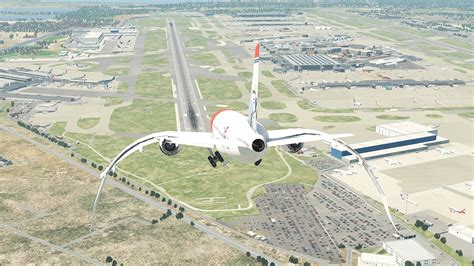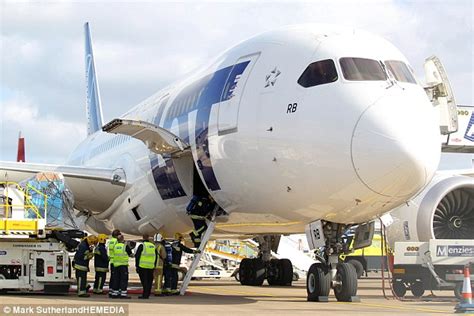
Air India Express Flight 812, which crashed in Mangalore in 2010, killing 158 people, reveals in its final cockpit voice recording (CVR) transcripts a pilot expressing confusion and making last-minute attempts to abort the landing after realizing the aircraft was not properly aligned with the runway, highlighting a series of critical errors and communication breakdowns in the moments leading up to the disaster.
The chilling last words extracted from the CVR of the ill-fated Air India Express flight offer a grim insight into the chaotic final moments before the Boeing 737-800 overshot the runway at Mangalore International Airport on May 22, 2010. The transcript, recently brought to light, captures the pilots’ struggle to execute a safe landing, revealing a series of misjudgments and a last-ditch effort to avert the impending disaster. The flight, carrying 166 passengers and crew from Dubai, crashed after attempting a go-around, resulting in the death of all but eight individuals.
The CVR transcript paints a harrowing picture of the flight’s final minutes, beginning with the captain, Zlatko Glusica, expressing disorientation and confusion regarding the aircraft’s position. “Oh my god, we’re gone,” are among the last words uttered, encapsulating the pilots’ realization of the imminent catastrophe. The first officer, H.S. Ahluwalia, can be heard suggesting a go-around, but the execution came too late to prevent the crash.
The Air India Express Flight 812 crash remains one of the deadliest aviation disasters in Indian history, and the release of these final cockpit recordings offers a stark reminder of the critical importance of adherence to standard operating procedures and effective crew resource management. The accident investigation report had previously highlighted several factors contributing to the crash, including pilot error, the captain’s disregard for standard operating procedures, and the first officer’s inadequate monitoring.
The newly revealed transcript amplifies these findings, providing a more visceral understanding of the sequence of events that led to the tragedy. It reveals a cockpit atmosphere fraught with confusion and a late realization of the impending danger, underscoring the importance of rigorous training and adherence to established protocols in preventing future accidents.
The investigation into the Air India Express Flight 812 crash concluded that the primary cause was the captain’s failure to discontinue an unstabilized approach despite multiple warnings and the first officer’s failure to take over. An unstabilized approach occurs when an aircraft deviates from the prescribed speed, altitude, or descent rate during the final stages of landing. The CVR transcript indicates that the aircraft was too high and too fast as it approached the runway, setting the stage for the subsequent disaster.
The transcript reveals that the first officer repeatedly urged the captain to initiate a go-around, but his suggestions were either ignored or came too late to be effective. The go-around procedure involves aborting the landing and circling around to attempt another approach. The delay in initiating this maneuver proved fatal.
The CVR transcript underscores the crucial role of effective communication and assertiveness in the cockpit. While the first officer recognized the unstable approach and suggested a go-around, his attempts to correct the situation were not forceful enough to overcome the captain’s decision-making. This highlights the importance of cockpit resource management (CRM) training, which emphasizes the need for all crew members to actively participate in ensuring flight safety, regardless of their rank or experience.
The Air India Express Flight 812 crash was not an isolated incident. It occurred against a backdrop of growing concerns about aviation safety in India, particularly regarding the operation of low-cost carriers and the oversight of pilot training and certification. Following the crash, the Indian government implemented a series of measures aimed at improving aviation safety, including stricter regulations for pilot training, enhanced oversight of airlines, and improvements to airport infrastructure.
The release of the CVR transcript serves as a stark reminder of the human factors involved in aviation accidents. It underscores the importance of not only technical proficiency but also effective communication, decision-making, and adherence to standard operating procedures. The lessons learned from the Air India Express Flight 812 crash continue to inform aviation safety practices around the world, serving as a constant reminder of the need for vigilance and continuous improvement in the pursuit of safer skies.
The transcript also highlights the psychological pressures that pilots face, particularly in high-stress situations. The captain’s apparent disorientation and reluctance to initiate a go-around may have been influenced by a combination of factors, including fatigue, time pressure, and a desire to avoid the perceived embarrassment of a failed landing. These psychological factors can impair judgment and decision-making, increasing the risk of accidents.
The CVR transcript of Air India Express Flight 812 provides valuable insights into the complex interplay of factors that can contribute to aviation disasters. It serves as a powerful reminder of the importance of rigorous training, effective communication, and adherence to standard operating procedures in ensuring flight safety. The lessons learned from this tragedy must continue to inform aviation safety practices around the world, helping to prevent similar accidents from occurring in the future.
The Air India Express Flight 812 accident also raised questions about the adequacy of airport infrastructure in India. The runway at Mangalore International Airport, where the crash occurred, was known to be challenging due to its tabletop design, which features steep drops at either end. This design requires pilots to execute precise landings, leaving little margin for error. Following the crash, improvements were made to the runway and surrounding areas to enhance safety.
The accident investigation also examined the role of the Directorate General of Civil Aviation (DGCA), the regulatory body responsible for overseeing aviation safety in India. The investigation found that the DGCA had not adequately enforced safety regulations and had failed to address concerns about pilot training and certification. As a result, the DGCA underwent significant reforms following the Air India Express Flight 812 crash, aimed at strengthening its oversight capabilities and improving aviation safety standards.
The Air India Express Flight 812 crash had a profound impact on the families of the victims and the broader aviation community in India. It led to a renewed focus on aviation safety and a commitment to preventing similar accidents from occurring in the future. The lessons learned from this tragedy continue to inform aviation safety practices around the world, serving as a constant reminder of the need for vigilance and continuous improvement in the pursuit of safer skies.
The CVR transcript’s release has reopened wounds for the families of the victims, bringing back painful memories of the tragedy. While the report provides a detailed account of the events leading up to the crash, it also raises questions about whether more could have been done to prevent it. The families have called for greater accountability and transparency in the aviation industry, demanding that lessons learned from the Air India Express Flight 812 crash be fully implemented to prevent similar tragedies from occurring in the future.
The tragedy of Air India Express Flight 812 underscores the importance of a multi-faceted approach to aviation safety. This includes not only technical factors, such as aircraft maintenance and airport infrastructure, but also human factors, such as pilot training, communication, and decision-making. By addressing all of these factors, the aviation industry can strive to create a safer and more reliable transportation system for all.
The CVR transcript serves as a stark reminder of the potential consequences of complacency and human error in aviation. It underscores the need for continuous vigilance and a relentless commitment to safety at all levels of the aviation industry. The lessons learned from the Air India Express Flight 812 crash must never be forgotten.
The investigation into the Air India Express Flight 812 accident highlighted the importance of adhering to standard operating procedures (SOPs) in all aspects of flight operations. SOPs are designed to provide pilots with clear and concise guidance on how to perform various tasks, such as landing an aircraft. By following SOPs, pilots can reduce the risk of errors and improve their overall performance. The captain’s disregard for SOPs was a major contributing factor to the Air India Express Flight 812 crash.
The Air India Express Flight 812 crash also raised questions about the role of fatigue in aviation accidents. Fatigue can impair pilots’ judgment and decision-making abilities, increasing the risk of errors. The investigation found that the captain of the Air India Express Flight 812 had been working long hours in the days leading up to the crash, which may have contributed to his fatigue. As a result of this finding, the DGCA implemented stricter regulations regarding pilot duty times and rest requirements.
The Air India Express Flight 812 crash also highlighted the importance of effective communication between air traffic control and pilots. Air traffic controllers play a critical role in providing pilots with information about weather conditions, traffic congestion, and other potential hazards. In the case of the Air India Express Flight 812 crash, the air traffic controllers provided the pilots with accurate information about the weather conditions at Mangalore International Airport. However, the pilots failed to adequately assess this information and make appropriate adjustments to their approach.
The Air India Express Flight 812 crash was a complex event with multiple contributing factors. However, the underlying theme that emerges from the investigation is the importance of human factors in aviation safety. By addressing these factors, the aviation industry can significantly reduce the risk of accidents and improve the safety of air travel for everyone. The CVR transcript is a testament to the critical need for continuous training, adherence to procedures, and effective communication to prevent future tragedies.
The incident continues to influence aviation safety protocols and training programs worldwide, emphasizing the significance of crew resource management and the necessity for assertive communication in high-pressure situations. The Air India Express Flight 812 crash serves as a persistent, cautionary tale in the field of aviation, underscoring the potentially catastrophic consequences of even minor deviations from established safety standards.
In the aftermath of the tragedy, the families of the victims have become vocal advocates for aviation safety, pushing for reforms and greater accountability within the industry. They have worked tirelessly to ensure that the lessons learned from the Air India Express Flight 812 crash are not forgotten and that steps are taken to prevent similar tragedies from occurring in the future. Their efforts have helped to raise awareness of aviation safety issues and have contributed to improvements in regulations and training programs.
The legacy of Air India Express Flight 812 extends beyond the immediate aftermath of the crash. It has become a touchstone for discussions about aviation safety, pilot training, and regulatory oversight. The tragedy serves as a constant reminder of the importance of vigilance and continuous improvement in the pursuit of safer skies. The CVR transcript’s revealing last moments offer a stark and sobering look at the fragility of life and the critical importance of prioritizing safety in all aspects of aviation.
The Air India Express Flight 812 crash also prompted a review of the safety standards at other airports in India, particularly those with tabletop runways. These runways, which are built on elevated plateaus or hills, pose unique challenges for pilots due to the steep drop-offs at either end. Following the Air India Express Flight 812 crash, the DGCA implemented stricter regulations for operations at tabletop airports, including enhanced training requirements for pilots and improvements to runway safety areas.
The CVR transcript reveals the intense pressure and time constraints that pilots face during the final stages of flight. The pilots had only a few seconds to assess the situation, make a decision, and execute a maneuver that could have potentially saved the lives of everyone on board. This underscores the importance of training pilots to handle high-pressure situations and to make quick, decisive decisions under stress.
The Air India Express Flight 812 tragedy highlights the interconnectedness of all aspects of aviation safety. From pilot training to airport infrastructure to regulatory oversight, every element plays a critical role in ensuring the safety of air travel. When any one of these elements fails, the consequences can be devastating. The CVR transcript serves as a reminder of the importance of maintaining a strong and robust aviation safety system that is capable of preventing accidents and protecting passengers.
The release of the CVR transcript has provided closure for some of the families of the victims, allowing them to finally understand the events that led to the death of their loved ones. However, for others, the transcript has reopened old wounds and brought back painful memories. The Air India Express Flight 812 crash remains a deeply emotional and sensitive topic for many people, and it is important to approach it with respect and understanding.
The Air India Express Flight 812 crash serves as a reminder of the sacrifices that are made every day by the men and women who work in the aviation industry. Pilots, air traffic controllers, maintenance technicians, and countless others dedicate their lives to ensuring the safety of air travel. Their efforts often go unnoticed, but they are essential to the functioning of the global aviation system. The CVR transcript is a tribute to their dedication and professionalism.
Frequently Asked Questions (FAQ)
1. What was Air India Express Flight 812 and what happened to it?
Air India Express Flight 812 was a Boeing 737-800 operating from Dubai to Mangalore, India. On May 22, 2010, the flight crashed upon landing at Mangalore International Airport, overshooting the runway and resulting in the death of 158 of the 166 passengers and crew on board. The crash was primarily attributed to pilot error, specifically the captain’s failure to discontinue an unstabilized approach.
2. What is a Cockpit Voice Recorder (CVR) and why is its transcript important in this case?
A Cockpit Voice Recorder (CVR) is an essential piece of equipment in aircraft that records the audio environment of the flight deck, including pilot communications, engine sounds, and any alarms or warnings. The CVR transcript is vital because it provides a detailed record of the pilots’ actions, discussions, and any issues they encountered in the moments leading up to an accident. In the case of Air India Express Flight 812, the transcript reveals the pilots’ confusion, last-minute attempts to abort the landing, and the overall chaotic atmosphere in the cockpit just before the crash.
3. What key factors contributed to the Air India Express Flight 812 crash, according to the investigation and the CVR transcript?
The key factors contributing to the crash included:
- Pilot Error: The captain’s failure to discontinue an unstabilized approach, despite warnings from the first officer.
- Unstabilized Approach: The aircraft was too high and too fast as it approached the runway.
- Delayed Go-Around: The decision to initiate a go-around was made too late to prevent the crash.
- Inadequate Monitoring: The first officer’s failure to effectively monitor the captain’s actions and take over control of the aircraft when necessary.
- Possible Fatigue: The captain’s potential fatigue due to long working hours.
- Disregard for SOPs: The captain’s disregard for Standard Operating Procedures.
4. What actions were taken in the aftermath of the Air India Express Flight 812 crash to improve aviation safety?
Following the Air India Express Flight 812 crash, several measures were implemented to enhance aviation safety in India, including:
- Stricter Pilot Training Regulations: Enhanced training requirements for pilots, with a greater emphasis on crew resource management and handling unstabilized approaches.
- Enhanced Oversight of Airlines: Increased scrutiny of airlines by the Directorate General of Civil Aviation (DGCA), the regulatory body responsible for aviation safety in India.
- Improved Airport Infrastructure: Upgrades to airport infrastructure, including improvements to runway safety areas and enhanced navigation aids.
- Stricter Regulations for Tabletop Airports: Specific regulations for operations at airports with tabletop runways, which are considered more challenging to land on.
- Pilot Duty Time Restrictions: Implementation of stricter regulations regarding pilot duty times and rest requirements to mitigate fatigue.
5. What is the significance of the Air India Express Flight 812 crash and its CVR transcript in the context of aviation safety worldwide?
The Air India Express Flight 812 crash serves as a critical case study in aviation safety, highlighting the importance of:
- Crew Resource Management (CRM): Emphasizing the need for effective communication, assertiveness, and teamwork among flight crew members.
- Adherence to Standard Operating Procedures (SOPs): Reinforcing the importance of following established procedures for all flight operations.
- Recognizing and Correcting Unstabilized Approaches: Training pilots to identify and respond appropriately to unstabilized approaches, which are a major cause of landing accidents.
- The Role of Human Factors: Recognizing the influence of human factors, such as fatigue, stress, and decision-making biases, on flight safety.
- Continuous Improvement in Aviation Safety: Underscoring the need for continuous vigilance and improvement in all aspects of aviation safety to prevent future accidents. The CVR transcript provides valuable insights into the complex interplay of these factors, serving as a reminder of the need for ongoing efforts to enhance safety in the aviation industry.
The legacy of Air India Express Flight 812 extends beyond the borders of India. Aviation authorities and airlines around the world have studied the accident and its contributing factors to improve their own safety practices and training programs. The CVR transcript serves as a powerful tool for teaching pilots and other aviation professionals about the importance of communication, decision-making, and adherence to procedures. It is a reminder that even experienced pilots can make mistakes, and that a strong safety culture is essential to preventing accidents. The accident continues to shape the future of aviation safety, influencing the design of aircraft, the training of pilots, and the regulation of airlines.
The Air India Express Flight 812 crash serves as a stark reminder that aviation safety is not something that can be taken for granted. It requires constant vigilance, continuous improvement, and a commitment from all stakeholders to prioritize safety above all else. The CVR transcript is a powerful testament to the importance of these principles, and it will continue to inform and inspire efforts to make air travel safer for everyone. The tragedy underscores the importance of proactive measures, rigorous oversight, and a relentless pursuit of excellence in the aviation industry. The lessons learned from Air India Express Flight 812 must be continuously reinforced and applied to prevent similar accidents from occurring in the future, ensuring that the memory of those who perished on that fateful day serves as a catalyst for positive change.









